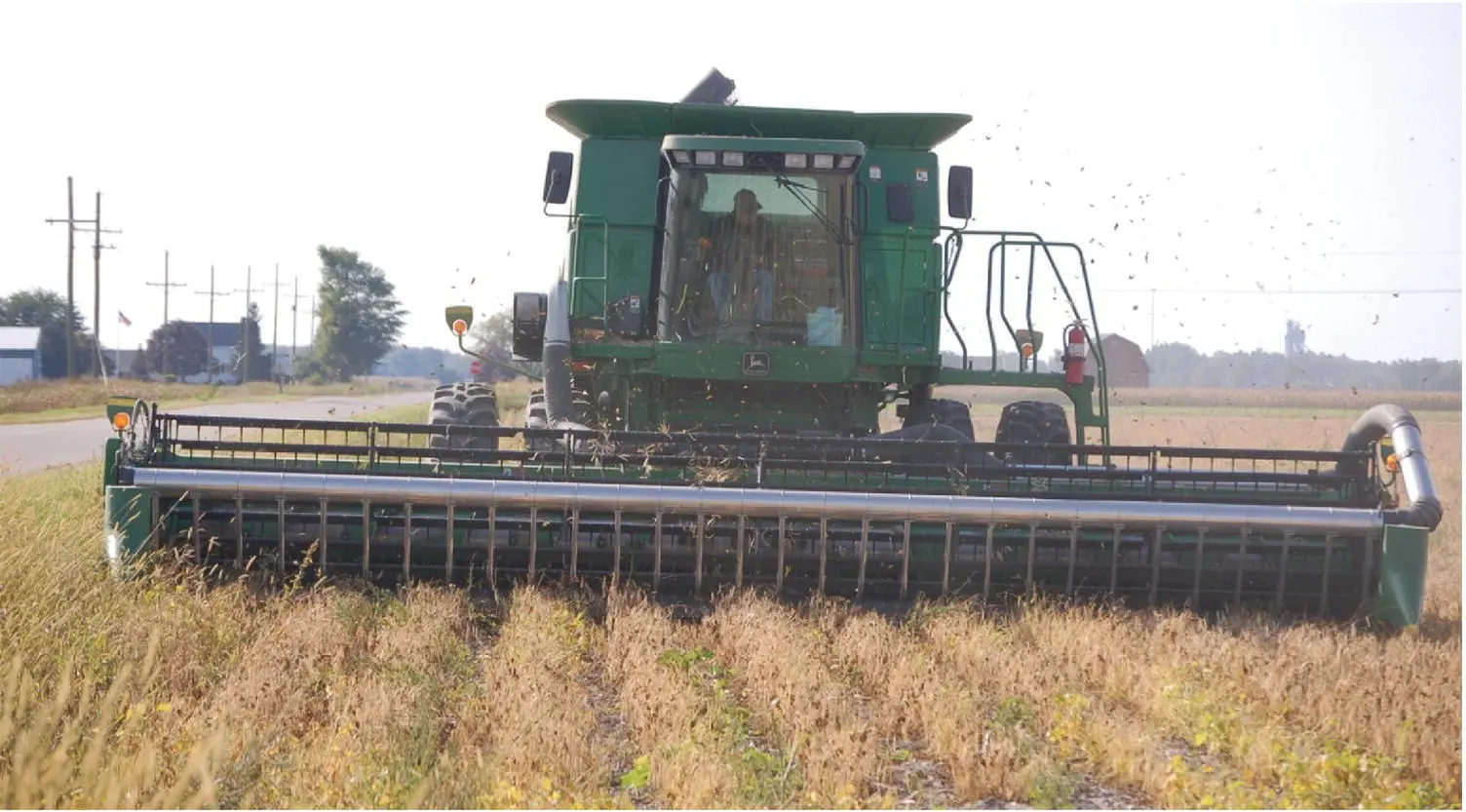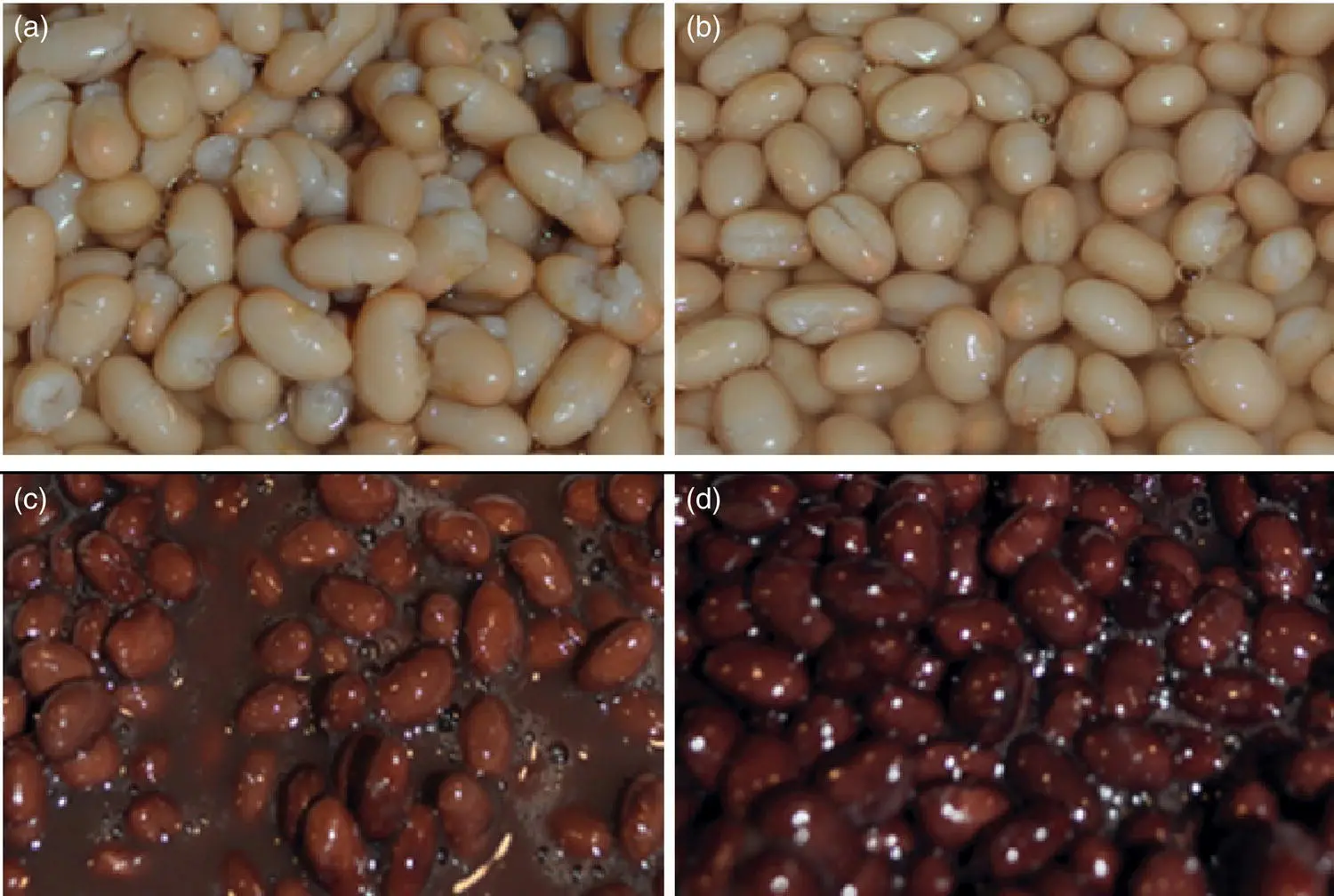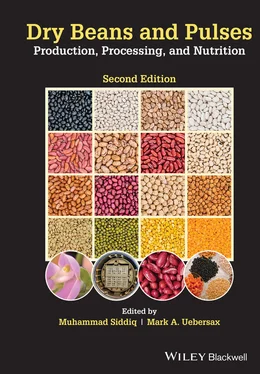Dry Beans and Pulses Production, Processing, and Nutrition
Здесь есть возможность читать онлайн «Dry Beans and Pulses Production, Processing, and Nutrition» — ознакомительный отрывок электронной книги совершенно бесплатно, а после прочтения отрывка купить полную версию. В некоторых случаях можно слушать аудио, скачать через торрент в формате fb2 и присутствует краткое содержание. Жанр: unrecognised, на английском языке. Описание произведения, (предисловие) а так же отзывы посетителей доступны на портале библиотеки ЛибКат.
- Название:Dry Beans and Pulses Production, Processing, and Nutrition
- Автор:
- Жанр:
- Год:неизвестен
- ISBN:нет данных
- Рейтинг книги:5 / 5. Голосов: 1
-
Избранное:Добавить в избранное
- Отзывы:
-
Ваша оценка:
- 100
- 1
- 2
- 3
- 4
- 5
Dry Beans and Pulses Production, Processing, and Nutrition: краткое содержание, описание и аннотация
Предлагаем к чтению аннотацию, описание, краткое содержание или предисловие (зависит от того, что написал сам автор книги «Dry Beans and Pulses Production, Processing, and Nutrition»). Если вы не нашли необходимую информацию о книге — напишите в комментариях, мы постараемся отыскать её.
The second edition of the most complete and authoritative reference on dry beans production, processing, and nutrition available Dry Beans and Pulses: Production, Processing, and Nutrition
Dry Beans and Pulses: Production, Processing, and Nutrition, Second Edition
Dry Beans and Pulses Production, Processing, and Nutrition — читать онлайн ознакомительный отрывок
Ниже представлен текст книги, разбитый по страницам. Система сохранения места последней прочитанной страницы, позволяет с удобством читать онлайн бесплатно книгу «Dry Beans and Pulses Production, Processing, and Nutrition», без необходимости каждый раз заново искать на чём Вы остановились. Поставьте закладку, и сможете в любой момент перейти на страницу, на которой закончили чтение.
Интервал:
Закладка:
Breeding for direct harvest systems
Advances in plant breeding drive agronomic change. This has been observed with the green revolution in parts of Asia (Peng et al. 2010), mechanization of processing tomato, and pickle cucumber harvesting in the US. In the absence of these genetic changes, agronomic or management changes would not have been possible. In dry beans, the traditional harvest method across the country was to undercut and pull bean plants at maturity, windrow these plants into larger rows, and thresh plants when dry using a pickup reel on the combine, all in separate operations. These traditional operations are costly in terms of time, equipment, fuel, and labor that prevent growers from expanding bean acreage.
With the development of taller, more upright varieties that resist lodging (Kelly 2000; Soltani et al. 2016), growers started to explore the possibility of direct harvesting beans similar to soybeans. Without that change in improved plant architecture, growers would not have had that opportunity. In Michigan, over 80% of beans planted are direct harvested ( Figure 2.6 ) in a shorter time-period with minimum wear to the combine (no root/soil entering the machine), resulting in a cleaner product to sell to the elevator. The same growers can plant 25–30% more acres to beans compared to traditional harvest methods, freeing up additional tractors for other farm operations. The change in plant architecture has positively impacted all MA bean classes but has had little effect on the shorter-statured bush type kidney and cranberry beans.
Symbiotic nitrogen fixation (SNF)
Genetic variability exists for enhanced SNF (Kamfwa et al. 2015; Oladzad et al. 2020). However, under conventional systems, modest amounts of nitrogen (50kg N/ha) are applied to most breeding nurseries. SNF capacity of beans is diminished in the presence of N fertilizers preventing easy selection of improved lines (Reinprecht et al. 2020). By selecting under low N-inputs or soils, breeders could enhance SNF. Any gain in SNF would be advantageous for conventional growers, who could reduce the nitrogen being applied to the crops. This would be particularly favorable for growers in the Great Lakes watershed or numerous other regions that have significant drainage basins where issues of both surface and ground water contamination are serious. This would also help organic production, as organic system producers cannot apply N‐fertilizer and have to rely on crop rotations, animal manures, or compost to meet the nutritional needs of the crop, and it has been found that nitrogen is a limitation in organic bean production (Heilig et al. 2017b). Since beans are also an important crop of small, low‐income producers in developing countries, improved N‐fixation would be a most beneficial trait for these resource poor farmers (Graham et al. 2003).

Fig. 2.6. Direct combining navy beans in Michigan.
The use of marker‐assisted breeding for SNF related traits is one way to circumvent the need to select under low N conditions. Multiple studies have been undertaken to identify QTL that enhance SNF. One study was undertaken in a black bean population that was a cross between a commercial variety Zorro and a Mexican landrace, long reported to have high SNP capacity (Chaverra and Graham 1992; Heilig et al. 2017a). GWAS studies on Andean and Middle American diversity panels both identified multiple SNF related QTL (Kamfwa et al. 2015; Oladzad et al. 2020). These studies offer potential candidates for marker‐assisted breeding.
Processing quality
In the US, canned bean products represent a major segment of the dry bean market. As a ready‐to‐eat food, canned beans offer a convenient alternative to home preparation of dry beans, which require long cooking times. The value of canned bean products in the US in 2020 was $2.5 billion. This is 13% of the canned food market value and 82% of US dry bean dollars is associated with canned products (Nielsen Consumer LLC). For a dry bean variety to be commercially successful it must meet industry standards for processing quality and bean breeders have incorporated canning quality as a trait for improvement. A comparison of canning quality characteristics in five historically important navy bean varieties released from 1915 to 2008 revealed no difference in visual appearance of the canned beans, underscoring the importance of this trait (Butler and Cichy 2011).
Canning quality of breeding lines is assessed with a small scale protocol that approximates industrial canning on limited sample sizes. Typically, breeding lines are evaluated for canning quality beginning in the F 6generation and a 250 g seed sample is needed. The protocol was developed by Hosfield and Uebersax (1980) for US canning industry standards and has been modified for beans in tomato sauce (van der Merwe et al. 2006) and to suit the requirements of the Canadian Agricultural Standards Act (Balasubramanian et al. 2000). These evaluations ensure that canning quality standards are met and further improved upon. Canning quality is evaluated as an aggregate of individual components, including seed coat splitting and appearance as related to bean texture. Color retention is also evaluated in black beans, as this market class tends to lose its color during processing and there is wide genetic variability for this trait ( Figure 2.7 ) (Mendoza et al. 2017; Bornowski et al. 2020).
Micronutrient content
Dry beans are recognized as a nutrient‐dense food rich in protein, dietary fiber, folate, and minerals. Iron (Fe) and zinc (Zn) are two essential minerals for humans. While only small quantities are required in the diet, 7–27 mg Fe and 2–12 mg Zn daily, there are widespread deficiencies throughout the world. Two billion people globally suffer from iron deficiency (Wessells and Brown, 2012). An estimated 17.3% of humans worldwide are at risk for insufficient zinc intake (Maxfield and Crane 2020). Iron and zinc deficiencies are most common in people consuming diets rich in cereals and legumes with limited animal protein (Cordain 1999). Biofortification of staple crops, including dry beans, is one approach that has been taken to address these widespread micronutrient deficiencies. Biofortification efforts are largely facilitated by the international organization, Harvest Plus.

Fig. 2.7. Canned beans with differences in processing quality: (a) Navy beans with many splits and poor processing quality; (b) Navy bean with acceptable processing quality; (c) Black bean that appears brown following processing; and (d) Black bean that maintains black color following processing. (For color detail, please see color plate section.)
Source: Original images by author, K. A. Cichy.
Iron biofortification has been a major bean breeding initiative since 2003, primarily implemented through the International Center for Tropical Agriculture in collaboration with various national programs. HarvestPlus set iron biofortification targets at increases of at least 22 mg/kg above locally consumed varieties (Andersson et al. 2017). To date, at least 60 high iron bean varieties have been released in over 12 countries in eastern and southern Africa and Latin America (Saltzman et al. 2017; Beebe 2020). Breeding progress has been made largely through phenotypic selection for increased levels of raw seed iron concentrations. The large variability for iron and zinc levels in dry bean germplasm has facilitated breeding progress. Screening of the CIAT core collection of 1072 bean lines of Mesoamerican, Andean, and mixed‐origin beans has revealed genetic variability for seed Fe and Zn concentrations ranging from 34 to 96 mg/kg and 21 to 60 mg/kg, respectively (Islam et al. 2002). Iron concentrations as high as 152 mg/kg have been reported for some bean genotypes from race Chile (Paredes et al. 2009).
Читать дальшеИнтервал:
Закладка:
Похожие книги на «Dry Beans and Pulses Production, Processing, and Nutrition»
Представляем Вашему вниманию похожие книги на «Dry Beans and Pulses Production, Processing, and Nutrition» списком для выбора. Мы отобрали схожую по названию и смыслу литературу в надежде предоставить читателям больше вариантов отыскать новые, интересные, ещё непрочитанные произведения.
Обсуждение, отзывы о книге «Dry Beans and Pulses Production, Processing, and Nutrition» и просто собственные мнения читателей. Оставьте ваши комментарии, напишите, что Вы думаете о произведении, его смысле или главных героях. Укажите что конкретно понравилось, а что нет, и почему Вы так считаете.












